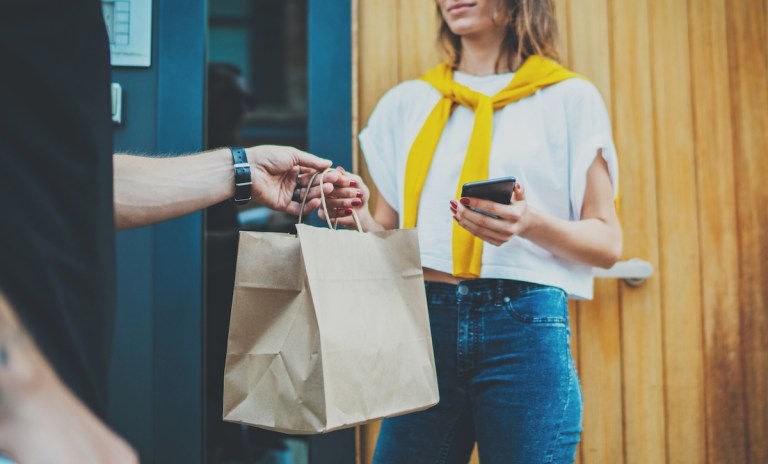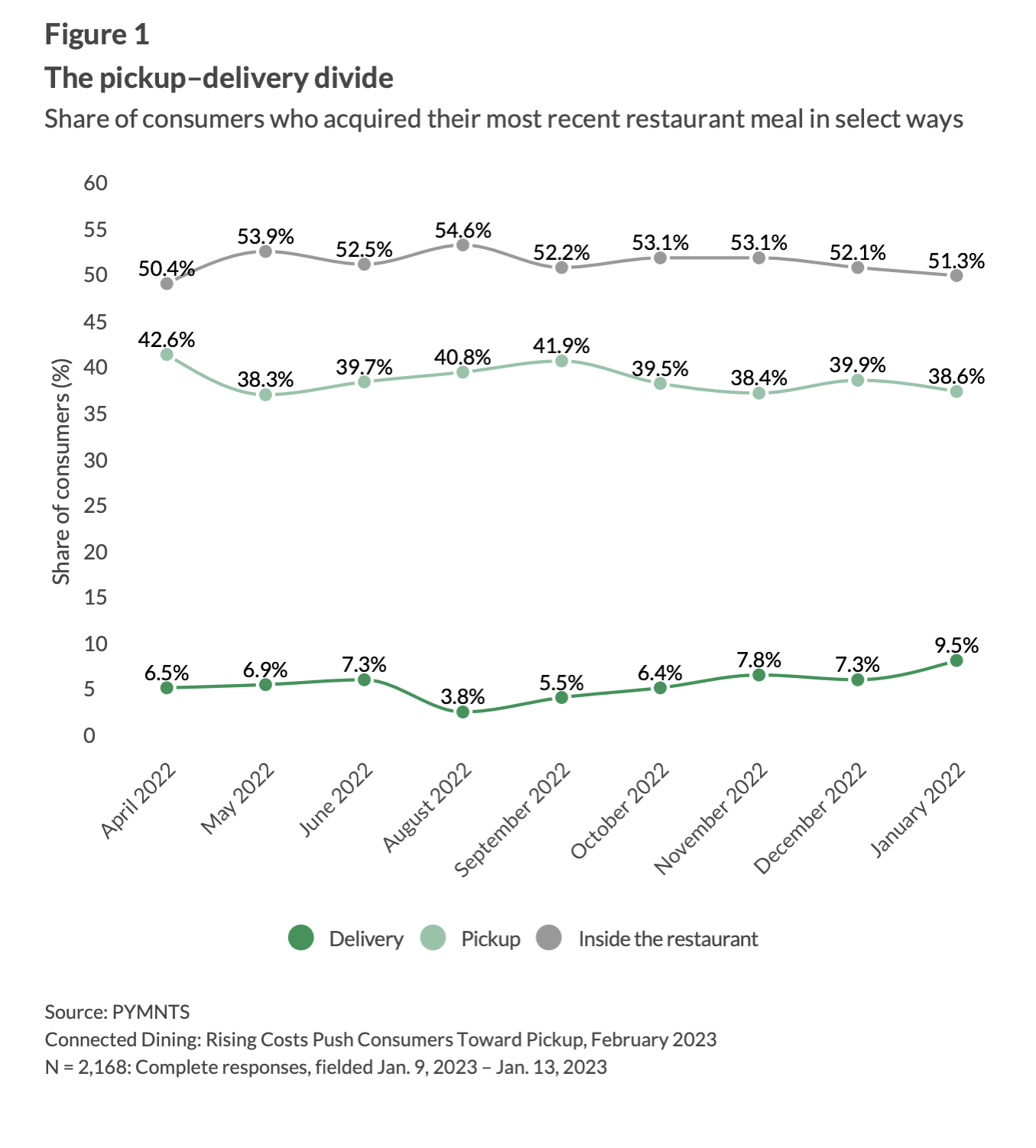
Persistent high prices of raw materials and supply chain issues have led to sharp rises in operational costs, forcing restaurants to a generalized increase in prices to keep up.
In response, customers are craving solutions and adjusting how they dine to save money.
A PYMNTS Intelligence study on consumer behavior regarding dining preferences showed that half of consumers who decide to treat themselves to a dining experience still prefer to go out to a restaurant. With slight variations, this percentage has remained steady over the past year and a half, reaching a level that now seems almost structural. However, the real fight to lure diners is taking place in the delivery and pickup spaces, where consumers are adopting different strategies to save money while enjoying a good meal.
Delivery saw a surge during the pandemic, and its growth remains robust. The percentage of consumers who chose delivery when acquiring their most recent restaurant meal increased from 6% to 10%, as recorded at the beginning of 2023.

To capture this opportunity, more and more restaurants offer delivery services with their own capabilities. The ones that do not have the logistics or financial capacity to do it themselves partner with delivery aggregators. Uber Eats partners with over 900,000 associated restaurants, for example, and DoorDash partners with around 400,000.
These partnerships include well-established names. Domino’s Pizza forged an agreement with Uber in July that allow customers in the United States to order their products through the Uber Eats app. This marks a change for Domino’s, which had previously avoided using third-party delivery apps in the U.S.
In January, Starbucks signed an agreement with DoorDash to allow customers to order their menu items through the DoorDash app and website.
However, a trend toward cost saving is also present when customers order their meals through a delivery provider. Another PYMNTS Intelligence study showed that twice as many diners use a restaurant’s app or website to place at least half their orders than they do through delivery aggregators, knowing that menu prices or fees on these platforms may be higher than ordering directly from the restaurant.
On the other hand, although the number of consumers picking up orders seems to be declining in favor of delivery, moving from a share of 43% of customers to 39% in one year, the current context of inflation might potentially mitigate this trend. Cost is top of mind for consumers, as 58% of takeout diners said they pick up restaurant meals to save on delivery fees, and 42% do it because not having to tip a delivery person is important to them. This behavior is present among all income groups and age ranges, showing a widespread trend toward cost-cutting.
Consumers think restaurant prices are increasing much faster than official inflation data shows. If this perception persists, we might expect a more rational consumer who is seeking alternatives to shift channels to save money.